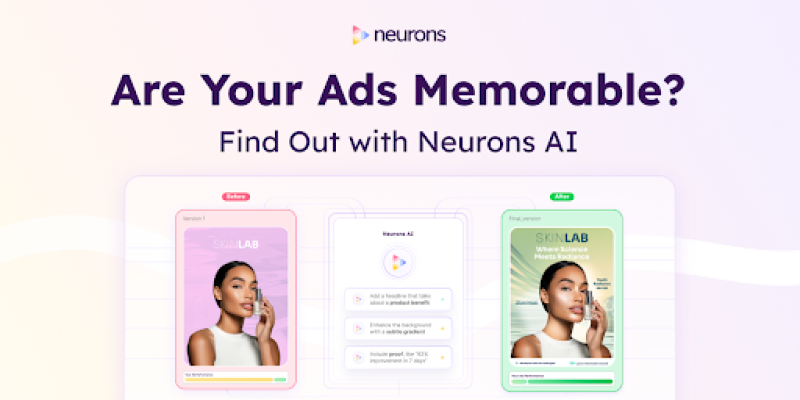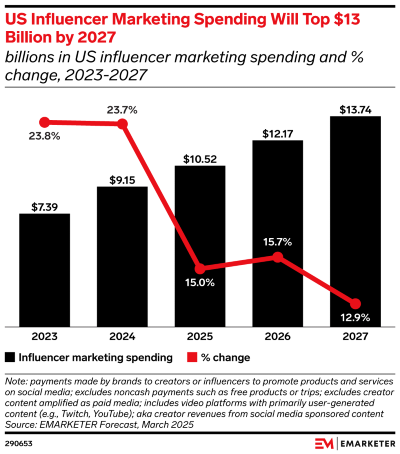Past Memories to Present Revenue
🧠 How to unlock second-purchase revenue by engineering emotional recall, not discounts, Influencer Marketing: Growth Meets Decline, and more!

Hey there Smarty 👋
Are you geared up to catch the latest and greatest in quick shorts?
And just a quick heads-up! If you stumbled upon us through a friend, make sure to subscribe here! That way, you’ll never miss out on the trending shorts.

🧠 Memory Reactivation Framework™: The LTV Lever You’re Probably Ignoring
When winbacks stall, most brands turn to bigger discounts. But the sharpest operators turn to memory.
Because, memory ≠ nostalgia.
It’s a precision-crafted bridge between who the buyer was when they first converted…
… and who they are now, open to returning.
This is the untapped power of memory-based reactivation, and when done right, it outperforms “We miss you” by over 2.4× CTR.
The 4-Phase Memory Reactivation Framework
Use this to engineer a full reactivation sequence, not just one email:
1. Anchor Phase Identity Hook: Use a subject line that evokes a specific era, identity, or emotional phase, like “Your ‘90s self is calling” or “You left this vibe in your cart.”
The goal isn’t urgency but instant familiarity, tapping into who they were or want to be. It anchors the message in personal memory rather than transactional pressure.
2. Recall Phase, Sensory Payload: Use visuals, textures, and cues to reignite emotion (e.g., summer camp, mixtapes, OG Netflix DVDs)Add layered memory: scents, formats, packaging
3. Update Phase, Continuity Bridge: Reintroduce the brand as evolved but consistent“Still the [playful/clean/edgy] brand you loved, just grown up.” Reduces dissonance, raises curiosity4. Invite Phase, Soft CTA: Call to continuation, not conversion
“Ready to revisit?” > “Claim 10% off”
Optional: tiered perk if opened + clicked
Advanced Strategy: Memory Mapping by Cohort
Most brands send the same reactivation email to all lapsers. High-performing teams build a Memory Profile Grid:
Pro tip: Use cohort memory bias to A/B test reactivation flows, it’s often worth 1.5x+ in return visit lift.
What to Avoid: Nostalgia Traps
- Mismatch Memory → Don’t give Gen Z a “Backstreet’s Back” moment
- Too Much Retro → Risks brand dilution if not layered with product innovation
- Vanilla Vibes → “The good old days” is too broad. Be exact. Be sensory. Be specific.
Email Isn’t the Only Memory Channel
The best teams stack this across:
- Direct mail → Retro catalog formats
- SMS → “The ringtone you miss just buzzed.”
- Paid social → Spark old memories via visuals (e.g., “throwback” unboxing)
Most reactivation flows chase urgency. But urgency without identity is forgettable. Use memory to turn past buyers into present revenue, with emotional continuity, not discounts.

Together with Neurons
🚦You Don’t Need a Test Budget to Know What Works

You’ve got two ad versions. One looks cleaner, the other pops more.
Instead of spending weeks A/B testing in-market, Neurons shows you what performs best in minutes.
Just drop both creatives into the platform:
🎯 You’ll see how attention flows across each version
🧠 Which ad evokes stronger memory and emotion
📈 And how they compare against top-performing benchmarks in your category
Then, Neurons gives you clear, AI-powered suggestions to improve performance before you spend a single dollar on media.
It’s how brands like Nestle, Teads, and Tropicana refine creatives fast, cut down wasted spend, and increase conversions from day one.
Want 73% higher CTR? Start with the ad that actually works.

📉 Influencer Marketing: Growth Meets Decline
Influencer marketing spend continues to rise across platforms, but audience behavior is shifting, and not in favor of brands. While budgets grow, trust drops, fatigue deepens, and once-loyal followers are starting to look the other way.

The Breakdown:
- Spend Keeps Rising, But Pressure Builds – U.S. influencer spend will hit $2.21B on Instagram in 2024, up from $1.96B in 2023. Marketers say ROI is essential to justify that growth, with 66% using influencer marketing for brand awareness and 55% for revenue goals.
- Trust in Influencers Is Cracking – Only 12% of people trust influencer promotions, and 42% of those regret their purchase. Hashtags like “#ad” now trigger instant scrolls.
- Sponsorship Overload Fuels Fatigue – Tools like SponsorBlock help users skip influencer ads, echoing the rise of ad blockers. TikTok and Instagram are saturated with sponsored posts.
Influencer marketing isn’t broken, but it’s losing its shine. The dollars are still flowing, but attention and trust aren’t guaranteed. Brands betting big on creators need a smarter strategy, tighter measurement, and a backup plan.

🚀Quick Hits
📦 Still explaining CX flows, PDP updates, or returns via email? Guidde records your screen and builds crystal-clear visual guides with voice, steps, and CTAs. Share anywhere in seconds: Notion, Shopify, Slack. Get the free browser extension and document once, reuse forever.
🧱 Google’s Offerwall is letting users unlock content by watching ads or taking surveys. Now live in Ad Manager, Offerwall gives publishers flexible ways to monetize, offering readers choices like rewarded ads, surveys, or micro-payments.
📊 41% of holiday shoppers say politics will affect gifting in 2025, with many turning to AI and social platforms like TikTok and Instagram, and 25% plan to buy from low-cost sites like Temu.
📈 Websites with high Google traffic are also most mentioned in AI search: Perplexity shows the strongest correlation, ChatGPT the weakest, and UGC sites like YouTube, Reddit, and Quora dominate AI Overviews.
📈 YouTube is testing AI Overviews-style search carousels for Premium users, showing video previews and AI-generated summaries on shopping, travel, and local queries.

That’s a wrap for today! Tell us your thoughts about today's content as we line up more Shorts! And don’t hesitate to share this with someone who’d adore it. 🥰
